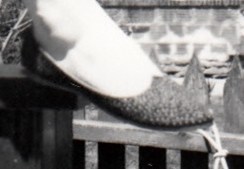Kathy Lynn Emerson's Blog, page 34
September 6, 2017
Books, Books and More Books!
By Brenda Buchanan
Fall is now rushing into view. When I gaze at my shelf of just-read and to-be-read books I wish there were more hours in the day.

Here we go . . .
My writing schedule keeps me in front of the keyboard until 9:30 or so on weeknights and many hours on weekend days. Honoring my writing routine is essential to staying in the flow, but reading others’ work is how I wind down before bed. While some of my MCW colleagues prefer to read anything but crime fiction when they’re immersed in a book of their own, I like to nourish myself with the familiar.
That said, I kicked off the summer with a novel that you won’t find shelved with mystery or crime fiction, Lisa Carey’s wonderful The Stolen Child. 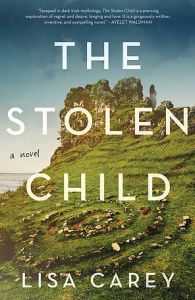 Set in 1959 on a remote island off the west coast of Ireland, it’s a superb tale of women with mystical power living in a close community.
Set in 1959 on a remote island off the west coast of Ireland, it’s a superb tale of women with mystical power living in a close community.
Lisa Carey lives in Maine and in a couple of weeks will be teaching a Maine Writers & Publisher’s Alliance class on the Anatomy of a Novel. I’ve not only signed up but plan to sit in the front row.
In October I’m going to Bouchercon in Toronto—the big Mama of mystery conventions. I’m thrilled to have been chosen to moderate a panel discussion called The Reporters: Enemies of the People or Champions of the Oppressed?
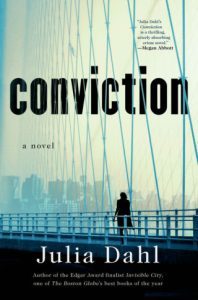
Five terrific crime writers who’ve done time in the journalistic trenches will discuss their fictional reporters and how their own real life experience informs their fiction.
In preparation for the panel I’m reading the panelists’ work. I inhaled Julia Dahl’s stunning Conviction, about a freelance reporter exposing the wrongful conviction of a man imprisoned for murdering his foster family when he was just a boy.
I’m in the middle of Gwen Florio’s Disgraced about a female soldier who returns from Afghanistan with secrets and emotional wounds.
Next up will be Finnish writer Antti Tuomainen’s The Mine, about a reporter’s efforts to expose the environmental devastation of a mining operation in a small town in Northern Finland. Then Christina Kovac’s The Cutaway about a television news producer investigating the disappearance of a Washington D.C. lawyer, and Rich Zahradnik’s Lights Out Summer, featuring a journalist working during the 1977 blackout in New York City.
I had the pleasure of reading MCW colleague Richard J. Cass’s second Elder Darrow book, In Solo Time, actually a prequel to his Maine Literary Award nominated Solo Act. I’m crazy about Dick’s protagonist, an alcoholic who finds salvation owning a bar, and I love the Boston jazz scene he evokes with his smooth prose. If you haven’t discovered Elder Darrow yet, it’s high time.
I suspect many readers of this blog are well-familiar with MCW alum Paul Doiron’s Mike Bowditch series. Knife Creek is the eighth book and boy-oh-boy does it deliver. Paul’s creepy characters burrow deep, and his handling of the deepening relationship between Mike Bowditch and Stacey Stevens is deft. If you love Maine, especially its outdoors, you’ll love this book.
I’m also doing some reading in preparation for New England Crime Bake in November. This year’s Guest of Honor is Lisa Gardner, who’s called the Queen of Suspense for a reason. I recently finished the latest in her Pierce Quincy/Rainie Conner series, Right Behind You. Could. Not. Put. It. Down.
My current read is Stuart Neville’s mesmerizing Those We Left Behind, which kept me up late over Labor Day weekend. The Belfast (Ireland)-based crime writer builds characters like nobody else. Neville’s prose is powerful, the plot is riveting.
So what’s lined up for fall?
First, two visits with old friends imagined to life by MCW colleagues.
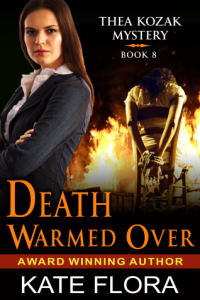 I’m a longtime fan of Thea Kozak, Kate Flora’s fascinating protagonist in a series I was afraid had ended. But now Death Warmed Over, Thea #8, is winking from the top of my TBR pile. I can’t wait.
I’m a longtime fan of Thea Kozak, Kate Flora’s fascinating protagonist in a series I was afraid had ended. But now Death Warmed Over, Thea #8, is winking from the top of my TBR pile. I can’t wait.
Bruce Coffin’s follow up to his first John Byron novel, Beneath The Depths, is also beckoning. It’s such a pleasure to read a police procedural by someone who really knows the life of a detective. Bruce has that world nailed, and I look forward to exploring it with him again.
I plan to read Louise Penny’s newest Three Pines mystery—Glass Houses—before I head to Bouchercon, where she’ll be the Canadian Guest of Honour.
I downloaded Lisa Alber’s Path Into Darkness this week. Family complexity dropped into a crime novel that unfolds in County Clare, where I spent a bit of time last spring. How can I resist? I’m also keen to read my pal Amy Reade’s newest, Highland Peril. Set on a loch in Scotland, I look forward to diving in.
Speaking of Scotland, I also plan to reward myself soon (for what? I’ll think of something) with Ann Cleeves’ Cold Earth, the seventh book in her Shetland series, which has me dreaming of a trip that remote archipelago.
What books did you enjoy this summer? What’s on top of your TBR pile? For the writers among you, does reading books in your genre feed your muse or overwhelm your creativity?
Brenda Buchanan is the author of the Joe Gale Mystery Series, featuring a diehard Maine newspaper reporter who covers the crime and courts beat. Three books—QUICK PIVOT, COVER STORY and TRUTH BEAT—are available through the Carina Press website, http:// carinapress.com and everywhere else e-books are sold.
Who is John Byron?
Bruce Robert Coffin here manning the helm of the Maine Crime Writers blog. This month I thought I’d share a bit of insight into my protagonist Detective Sergeant John Byron. People often ask me, who is John Byron? Me? Someone I worked with? Or is Byron totally made up? I guess the honest answer is that he’s comprised of all of those things.

When I began working for the Portland police in 1985 the department was largely comprised of officers from Irish and Italian descent, many of whom had lived their entire lives in the seaside community. These officers were the same officers who trained me. They taught me to be fair-minded, thorough, compassionate, and when necessary, tough. In creating Detective Byron I wanted to capture the essence of those same officers. I wanted to show the readers what it was like to be a cop in the city where you’d been raised. Adding to Byron’s complexity, I made him a second generation badge. Byron’s father Reece was also a Portland police officer which meant that Byron grew-up around cops and had been privy to the colorful war stories they told.
Like most of us John Byron was greatly influenced by his parents. His mother was a strict Irish Catholic who saw to it that John attended Catholic schools. Byron’s father didn’t adhere to much in the way of organized religion. In fact, Reece Byron was much too busy drinking and cavorting with other women to even adhere to the sanctity of marriage. And it goes without saying that Reece wasn’t much in the way of a positive role model either.
For all of his faults, Byron’s father was still a good cop. He was one of the original members of the police department’s Special Reaction Team (SRT), Portland’s version of SWAT. Reece was an “old school” cop who knew everyone on his beat by name. He could be gentle when it was called for and firm when it wasn’t, as many of the patrons of the old rough and tumble Portland waterfront could attest.
Byron’s parents separated then divorced when he was still a teenager. Shortly after the divorce Reece died unexpectedly and tragically. Both of those incidents made a lasting and painful impression on John Byron and played a large part in shaping the man and the cop he would ultimately become.
In the series debut, Among the Shadows, we meet the adult John Byron. Byron is the detective sergeant who runs the violent crime unit in Portland’s Criminal Investigation Division (CID). He is separated from his wife of twenty years and battling alcohol addiction. Living in a dingy little apartment in Portland’s West End neighborhood, Byron’s life is in disarray. The one thing John excels at is homicide investigations, but his crumbling personal life is putting his career in jeopardy.
If you’d like to learn more about Detective Sergeant John Byron, pick up or download a copy of Among the Shadows or Beneath the Depths. I promise it will be one hell of a ride!
September 4, 2017
Friends Around the World
 Kaitlyn Dunnett/Kathy Lynn Emerson here, thinking about communicating with people in distant places and feeling nostalgic. These days international correspondence is almost commonplace. Blogs, Facebook posts, Twitter feeds, and a host of other ways into cyberspace provide an instant connection to friends and strangers alike. Email and instant messaging allow those relationships to develop on a more personal level. You can even talk face-to-face if you want to, using cameras built into your computer or phone or whatever.
Kaitlyn Dunnett/Kathy Lynn Emerson here, thinking about communicating with people in distant places and feeling nostalgic. These days international correspondence is almost commonplace. Blogs, Facebook posts, Twitter feeds, and a host of other ways into cyberspace provide an instant connection to friends and strangers alike. Email and instant messaging allow those relationships to develop on a more personal level. You can even talk face-to-face if you want to, using cameras built into your computer or phone or whatever.
Okay, I’ve reached the limits of my technological knowledge. I write books on my computer. I do email, this blog, and I have a Facebook page. I have web pages for each of my names. And that’s about it. That’s enough to put me in touch with people from dozens of different countries. My “A Who’s Who of Tudor Women” in particular draws email from other lands and has, on occasion, led to lengthy correspondence.
And that brings me to what prompted this particular blog. Does anyone remember pen pals?
 Back in the dark ages when I was growing up (that would be the 1950s and early 1960s), the way we reached out to people in other countries was by writing letters. It wasn’t fast, but oh the excitement when a letter arrived from Australia or India or Japan. For several years before I hit my teens, I was an enthusiastic pen pal. I’m not sure how I acquired the first one, but I know that there were pen pal sections in many publications, printing names and addresses of people looking for people to write to in other countries. One of those publications was a comic book I read regularly about a young model named Katy Keene. I wrote to one of the addresses in the pen pal section, possibly in Australia, and in time a letter came back. The person who’d originally advertised for a pen pal had done so several years earlier and was now quite a bit older than I was but she’d passed my letter on to a younger friend and I corresponded with that girl for a number of years afterward.
Back in the dark ages when I was growing up (that would be the 1950s and early 1960s), the way we reached out to people in other countries was by writing letters. It wasn’t fast, but oh the excitement when a letter arrived from Australia or India or Japan. For several years before I hit my teens, I was an enthusiastic pen pal. I’m not sure how I acquired the first one, but I know that there were pen pal sections in many publications, printing names and addresses of people looking for people to write to in other countries. One of those publications was a comic book I read regularly about a young model named Katy Keene. I wrote to one of the addresses in the pen pal section, possibly in Australia, and in time a letter came back. The person who’d originally advertised for a pen pal had done so several years earlier and was now quite a bit older than I was but she’d passed my letter on to a younger friend and I corresponded with that girl for a number of years afterward.
Looking back, memory faulty and the actual letters long gone, I don’t know what I wrote to various pen pals or, for the most part, what they wrote to me. I hope I didn’t inadvertently insult anyone. Certainly there were cultural differences that surprised me. My pen pal in Singapore, Vivien Yeo, wrote to tell me of her marriage . . . at thirteen. It was arranged by her parents. Hannelore Weiss, in Germany, sent me picture postcards . . . of buildings my father knew from first-hand experience had been bombed during World War II. Then there was Sonoko Mitsufuji (I think that’s the correct spelling but I won’t swear to it) from Japan. Her older brother paid a visit to the U.S. during the time we were corresponding and came and stayed with us. My father took him to a Rotary Club meeting.
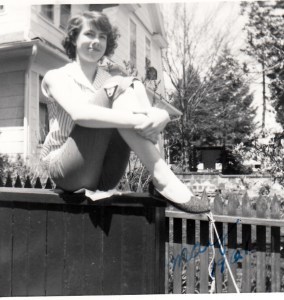 I wish I still had those letters. If any of them sent me photos of themselves, those are long gone too. Sadly, so are most of their names. If I could remember more, given today’s technology, I might be able to reconnect with a few of my pen pals. There was Heather. Was she from Australia or New Zealand? I had a pen pal in each country. There was Carole from Bristol, England. I thought of her the first time I visited Great Britain at age twenty, but by then I’d already forgotten her last name and street address. My pen pal in India was a boy. He asked me to trace my feet and send the tracing to him. Nothing kinky. A few months later he sent me a pair of shoes. I sent him a photograph of me wearing them.
I wish I still had those letters. If any of them sent me photos of themselves, those are long gone too. Sadly, so are most of their names. If I could remember more, given today’s technology, I might be able to reconnect with a few of my pen pals. There was Heather. Was she from Australia or New Zealand? I had a pen pal in each country. There was Carole from Bristol, England. I thought of her the first time I visited Great Britain at age twenty, but by then I’d already forgotten her last name and street address. My pen pal in India was a boy. He asked me to trace my feet and send the tracing to him. Nothing kinky. A few months later he sent me a pair of shoes. I sent him a photograph of me wearing them.
I don’t know why I stopped writing those letters or exactly when it happened. I suppose it was a gradual thing as I turned from kid into teenager and outgrew my interest in pen pals, and that the same thing was happening to my correspondents. What about you, our faithful blog readers? Did you have pen pals when you were younger? Did you keep in touch as you got older? And what do you think my chances are of reconnecting with one or two of my former pen pals now that I’m putting this post out on social media?
Kathy Lynn Emerson/Kaitlyn Dunnett is the author of more than fifty traditionally published books written under several names. She won the Agatha Award and was an Anthony and Macavity finalist for best mystery nonfiction of 2008 for How to Write Killer Historical Mysteries and was an Agatha Award finalist in 2015 in the best mystery short story category. She was the Malice Domestic Guest of Honor in 2014. Currently she writes the contemporary Liss MacCrimmon Mysteries (X Marks the Scot—December 2017) and Deadly Edits series (Crime and Punctuation—2018) as Kaitlyn and the historical Mistress Jaffrey Mysteries (Murder in a Cornish Alehouse) as Kathy. The latter series is a spin-off from her earlier “Face Down” mysteries and is set in Elizabethan England. New in 2017 is a collection of short stories, Different Times, Different Crimes. Her websites are www.KaitlynDunnett.com and www.KathyLynnEmerson.com
A Vocabulary for Fall
 Kate Flora: When my boys were little, we used to have word lists posted on the refrigerator both to improve their vocabularies, and to encourage creativity and kindness in their name-calling. My family has always had a fascination with word play. My brother John is the world’s best (or worst) punster, and I own a zillion books about word origins and the development of language. I even have (of course) the giant two volume Oxford English Dictionary—the one with the little drawer and a magnifying glass—and I use it.
Kate Flora: When my boys were little, we used to have word lists posted on the refrigerator both to improve their vocabularies, and to encourage creativity and kindness in their name-calling. My family has always had a fascination with word play. My brother John is the world’s best (or worst) punster, and I own a zillion books about word origins and the development of language. I even have (of course) the giant two volume Oxford English Dictionary—the one with the little drawer and a magnifying glass—and I use it.
Once, early in the Thea Kozak series, I had a list on the wall of a dozen words for pain—she was always mixing it up with the bad guys—and another time it was pages of words for colors. What can I say? I’m a writer. I like words.
This week, the sudden, and unwanted, nip in the air sent me scurrying to my trusty Rodale’s Synonym Finder for words to describe what is happening, thinking it would be fun to share some of them with you, and Rodale’s was a bust.
I looked up autumn and got fall and harvest. I looked up equinox and it wasn’t there at all. Undaunted, I grabbed my Bartlett’s, source of a hundred epigrams, and sighed with relief. Words, crunchy, powerful, evocative words. There are those who see autumn as sadness and an end, and those for whom it is a time of ripening and crescendo.
Arthur Symons give us:
The gray-green stretch of sandy grass,
Indefinitely desolate;
A sea of lead, a sky of slate;
Already autumn in the air, alas!
And Matthew Arnold:
Coldly, sadly descends
The autumn evening. The field,
Strewn with its dank yellow drifts
Of withered leaves, and the elms,
Fad into dimness apace
 And Tennyson captures what my small boys would have described as “happy sad,”
And Tennyson captures what my small boys would have described as “happy sad,”
Tears, idle tears, I know not what they mean,
Tears from the depths of some divine despair
Rise in the heart, and gather to the eyes,
In looking on the happy autumn fields,
And thinking of the days that are no more
As does Shelley:
Make me thy lyre, even as the forest is:
What if my leaves are falling lit its own!
The tumult of thy mighty harmonies
Will take from both a deep, autumnal tone,
Sweet, though in sadness.
John Dryden gives us a good phrase for aging long:
Of no distemper, of no blast he died.
But fell like autumn fruit that mellowed
long—
For some of us, autumn is a season for slowing down, and contemplation, as in this, from  Thomas Hood:
Thomas Hood:
I saw old Autumn in the misty morn
Stand shadowless like silence, listening to silence
These writers remind us to slow down and contemplate the world around us, and there is no better time for that than is fall, as the leaves turn, the fields grow golden, pumpkins ripen, and the last tomatoes struggle to turn red.
Do you have “fall” word that you like? A poem, a quote, and phrase that comes to mind as the days shorten and the air grows cool?
September 1, 2017
Weekend Update: September 2-3, 2017
 Next week at Maine Crime Writers, there will be posts by Kate Flora(Monday), Kaitlyn Dunnett/Kathy Lynn Emerson (Tuesday), Bruce Coffin (Wednesday), Brenda Buchanan (Thursday), and Dick Cass (Friday).
Next week at Maine Crime Writers, there will be posts by Kate Flora(Monday), Kaitlyn Dunnett/Kathy Lynn Emerson (Tuesday), Bruce Coffin (Wednesday), Brenda Buchanan (Thursday), and Dick Cass (Friday).
In the news department, here’s what’s happening with some of us who blog regularly at Maine Crime Writers:
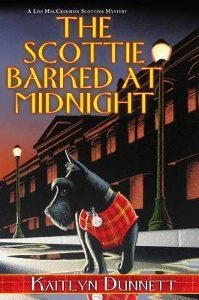 from Kaitlyn Dunnett: The Scottie Barked at Midnight will be a BookBub promotion in September, priced at just $1.99 for the ebook at all ebook outlets. It will also be on sale in KOBO format in Canada. In Australia, and New Zealand, from August 31- September 11, the first five books in the Liss MacCrimmon series will be available from KOBO at $3.99 for Kilt Dead, Scone Cold Dead, and Scotched. A Wee Christmas Homicide and The Corpse Wore Tartan will be on sale for $2.99 each. And stay tuned: the first nine books in the series will all be discounted at some point in September (maybe even now!) at all U.S. ebook outlets. Why? Because #10, Kilt at the Highland Games, is coming out in paperback (and will drop its current ebook price) at the end of the month. Enjoy!
from Kaitlyn Dunnett: The Scottie Barked at Midnight will be a BookBub promotion in September, priced at just $1.99 for the ebook at all ebook outlets. It will also be on sale in KOBO format in Canada. In Australia, and New Zealand, from August 31- September 11, the first five books in the Liss MacCrimmon series will be available from KOBO at $3.99 for Kilt Dead, Scone Cold Dead, and Scotched. A Wee Christmas Homicide and The Corpse Wore Tartan will be on sale for $2.99 each. And stay tuned: the first nine books in the series will all be discounted at some point in September (maybe even now!) at all U.S. ebook outlets. Why? Because #10, Kilt at the Highland Games, is coming out in paperback (and will drop its current ebook price) at the end of the month. Enjoy!
An invitation to readers of this blog: Do you have news relating to Maine, Crime, or Writing? We’d love to hear from you. Just comment below to share.
And a reminder: If your library, school, or organization is looking for a speaker, we are often available to talk about the writing process, research, where we get our ideas, and other mysteries of the business. Contact Kate Flora
August 31, 2017
Even the most dedicated writer must eat . . .

Even when a writer is in book jail, or sweating over interminable edits, or wishing there were a nearby pub somewhere in the midst of rural Maine, meals are a necessity. True, we often eat at our desks, laboring over crumb-strewn keyboards that by the end of the book could be boiled for soup, but sometimes we need to stretch. We rise, see if we can still touch our toes, punch the air a few times to show who’s boss, and head for the kitchen. Is there anything to eat? Something quick, because the deadline looms? Something comforting because writing is stressful?
What are Maine Crime Writer’s go-to recipes when the body as well as the soul needs to be nourished?
Kate Flora: This really isn’t a summer recipe, it is more along the lines of quick fix comfort food. I scrub a potato and throw it in the microwave. While it is cooking, I cook some bacon in my trusty cast iron frying pam. I drain the bacon on a paper towel while I saute a large sweet onion in the bacon fat. When the potato is done, I chop it up and throw it in with the onion, cooking until it begins to get crisp and brown. Then I take it off the burner, top it with lots of shredded cheddar, crumble the bacon over it, and bake it in a hot oven for about 15 minutes.
You can add eggs, making it more of a frittata, or sprinkle it with chopped chives. Or basically whatever you want. Bottom line? This is decadent, delicious, and will send your cholesterol levels off the chart.
Lea Wait: Aunt Nettie, in my Shadows series, is a wonderful, traditional Maine, cook. Here’s her recipe for Blueberry Cake with Lemon Sauce, a recipe I learned from my grandmother.
Ingredients for Cake: 1/3 cup room temperature butter, 1 1/2 cups sugar, 2 room temperature eggs, 1/2 cup milk, 1 1/4 cups flour. 1/2 teaspoon salt, 1/2 teaspoon vanilla, 2 teaspoons baking powder, 2+ cups wild blueberries mixed with 1/2 cup flour. Butter sheet cake pan or two 8-inch cake pans. Pre-heat oven to 375 degrees. Cream together butter and sugar. Beat eggs, and add to creamed mixture. Add vanilla and milk. Stir. Then add flour, salt and baking powder. Pour into prepared pan(s) and bake 20-25 minutes, until toothpick inserted in middle of cakes comes out clean. Cool. Cut in squares and pour lemon sauce on top when served.
Lemon Sauce: 1 1/2 cups sugar, 2 tablespoons cornstarch, 2 cups boiling water, 4 tablespoons butter. juice of 1 lemon, pinch of salt and pinch of nutmeg. Mix sugar and cornstarch. Gradually add boiling water. Boil 5 minutes, stirring constantly. Remove from heat and add lemon juice, butter, nutmeg and salt. Stir well. Pour over individual pieces f blueberry cake. Sauce may be served hot or cold; refrigerated, it will keep for several days and may be reheated. (Aunt Nettie and my grandmother preferred it warm.)
John Clark: We don’t have a particular recipe to pass on, but with two big gardens, making supper is often a matter of what’s ripe. Right now, we’re awash in yellow cherry tomatoes, striped Armenian cukes, leaf lettuce, cauliflower, more broccoli than we know what to do with, summer squash, potatoes and rainbow chard. These guarantee a fresh salad almost every night as well as creamy soups and stir fries.

Monster carrots

Even more satisfying are daily fruit smoothies. I’m blending whatever fruit is ready with some store bought varieties. Thus far they’ve included wild blueberries, tart cherries, three varieties of raspberries and blackberries. These get blended with grapes, nectarines, plums, peaches, and bananas. A little half and half, plus low fat vanilla yogurt and Voila! Instant decadence. Yesterday I made just over a gallon of cider from the Macintosh drops down back. This weekend, I’ll do the same with apples from two other trees.

Perfect with melted cheese

Eat them like candy

Where’s the butter?

I love it when things come to a head!
Maureen Milliken: I’m half Italian, so “comfort food” is redundant. I’ve had a crazy summer, and spend a lot of time in a co-working space or at the USM library working, which means lots of sandwiches from home or spending money I don’t have on local fare.
My go-to breakfast though is something my mom always used to eat when I was a kid and it grossed me out. Now I can’t start the morning without it. She used to do it on wheat bread (I think), but I take a couple Eggo multi-grain waffles, toast them, spread them with ricotta cheese (whole milk, naturally), top that with wild Maine blueberries, a little pinch of brown sugar and some cinnamon, bake it in the oven at 420 degrees for about five minutes. Best breakfast ever and tastes great with my morning French press pot of Green Mountain Dark Magic coffee.
I’ve also been eating way too much Gifford’s ice cream.
I also have a quick summer Maine food story while I have your ear.
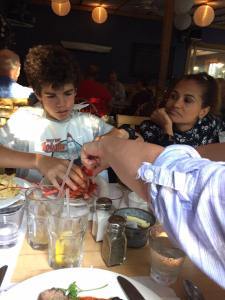
Liz (that’s her arm), helps Christian crack his first lobster while my cousin Jean looks on. It was their first visit to Maine from their home in Tanzania.
I am not a fan of lobster. Not at all, they look creepy, it’s too much work for the amount of food, and I always feel like I can see the look of accusation and dismay at being boiled alive in their beady little eyes as they sit on the plate.
But I’m not here to bury lobster, but to praise it.
My cousin, Jean, her husband Simon, and their kids Christian and James were visiting from Tanzania recently. We took them to Mom’s favorite restaurant, the Good Table in Cape Elizabeth. The boys insisted on ordering lobster, which they’d never had.
They loved it and had a ball. It’s a good thing my sister Liz was there, because she was the only one in our party of nine who knew the proper way to crack that baby open.
By the way, I also made them a mean blueberry and strawberry cobbler, topped with Gifford’s vanilla ice cream.
It’s Maine, it’s summer. Mangia.
Susan Vaughan: Summer in Maine means to me all things blueberry. Blueberries on cereal,  blueberry pancakes, even blueberries by the spoonful.
blueberry pancakes, even blueberries by the spoonful.
But I’m sharing here my recipe for Blueberry Nut Dessert. For those allergic to nuts, simply skip them. This is a super easy recipe that can also be made with apples, but takes a tad longer to bake.
Sprinkle in buttered 9-inch pie pan 1 1/2 to 2 cups berries, 1/4 cup brown sugar, and a pinch of cinnamon. Combine 1 egg, 1/2 cup sugar, 1/2 cup flour, 1/3 cup melted butter, and 1/3 to 1/2 cup chopped nuts. Spread the egg mixture over the berries. Bake at 375 degrees for 40-45 minutes and serve with whipping cream or ice cream.
Bruce Robert Coffin: You might be surprised to learn that I actually enjoy cooking. Unfortunately the only things I like to create are cold weather entrees like cheesecakes and homemade spaghetti sauce with fresh tomatoes and garlic. But since this is summer and no one is ready to utter the W word just yet, let’s stick to something I do enjoy eating during the warm weather. Lobster! More specifically, lobster rolls. And where does a guy from Maine go to satisfy his craving for the crustaceans from the deep? Why Red’s Eats in Wiscasset of course! A soft slightly toasted roll overflowing with meaty lobstery goodness. Squeeze a bit of lemon juice over it. Mmm. I’ll save you a place in line!

Brenda Buchanan here, with a suggestion to try one of my summer faves—tabouli.

A mélange of deliciousness
I don’t tend to follow recipes in a formal way, but the derivation here is my old friend, the Moosewood Cookbook.
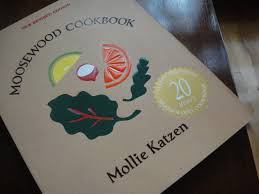
I pulled this image off the ‘net. My Moosewood is dog-eared from much love over the years.
Use your own instincts on the relative amounts of each ingredient. Personally, I use a heavy hand with the parsley, lemon and mint.
Here goes: Put a cup of coarse bulghur into a good-sized glass bowl. Pour in a cup and a half of boiling water. Then set a plate on top of the bowl for about a half hour to let the bulghur absorb the water. Then chop a big bunch of parsley, or better yet, throw it in the food processor and give it a good whirl. I like my tabouli parsley-forward, so I’m talking two or three bunches of the size you would buy at the supermarket if you don’t grow your own.
Do the same chopping ritual with a generous handful of mint leaves, and three or four cloves of garlic. When the bulghur has absorbed the water, squeeze the juice of three or more lemons over it, and add about 1/4 cup of good olive oil. Grind some black pepper over this and add some sea salt.

Summertime candy
Toss with the parsley/mint/garlic. Add a bunch of halved cherry tomatoes, some crumbled feta, nice olives and a can of rinsed garbanzo beans. This really works as a side dish to grilled lamb, but dances well with chicken and salmon, too. And it is perfectly fine all by itself.
Jessie: This is something fast and easy for which I almost always have the ingredients on hand and which tastes great hot or at room temperature. I grab a bag of chopped, washed and ready to cook kale and I toss it into a large pan with a bit of olive oil. As soon as it turns bright green and wilts I add a large, rinsed and drained can of kidney beans. As soon as those are heated through I crumble on a generous helping of feta cheese and a few lasings of Sriracha sauce. Delicious for any meal in any season!
Save
August 30, 2017
GOING LOONY
Susan Vaughan here. A few years ago, my husband and I sold our small sailboat and bought a camp. For the uninitiated, in Maine parlance, a camp is a summer or weekend cottage either in the woods or on a lake. Ours is on a lake not far from home. From the very first weekend we spent there, I’ve been entranced with loons. With their tuxedo plumage, their silent-but-deadly diving, their varied calls, their habits— everything. So you could say I’m the one who’s gone loony.
 Although loons may occasionally cruise the entire lake, they have their home territories, so in our cove we’ve had the same pair every summer. Of course, we had to name our loons, so to us they’re Arthur and Bertha. This summer I’ve been glued to the binoculars and the camera because it’s the first summer they’ve had a chick. Yes, a baby we’ve named Rocky. This is one of my photos, not professional, but you get the idea. Rocky’s coloring is still a soft grayish brown, not unlike his parents’ winter plumage. But notice how Bertha’s tuxedo blends with the rippling water.
Although loons may occasionally cruise the entire lake, they have their home territories, so in our cove we’ve had the same pair every summer. Of course, we had to name our loons, so to us they’re Arthur and Bertha. This summer I’ve been glued to the binoculars and the camera because it’s the first summer they’ve had a chick. Yes, a baby we’ve named Rocky. This is one of my photos, not professional, but you get the idea. Rocky’s coloring is still a soft grayish brown, not unlike his parents’ winter plumage. But notice how Bertha’s tuxedo blends with the rippling water.
 Chicks can swim right after hatching, but often rest on the mom’s back. By the time we spotted Rocky, he was swimming strongly… yet very close to his parents.
Chicks can swim right after hatching, but often rest on the mom’s back. By the time we spotted Rocky, he was swimming strongly… yet very close to his parents.
During these few years, I’ve learned a few things about loons. The loon got its name because of its awkward gait on land. There are five species of loons, but the ones in the northern U.S. and Canada are common loons. Arthur and Bertha and the others are large birds, about three feet in length and four feet of wing span. They could live to the ripe old age of 30.

Loons spend most of their time in the water, for which their bodies are supremely suited. Their legs and feet are set back under the body, providing strong propulsion underwater, the reason they’re ungainly on land. Loon bones are solid to aid them in diving and swimming underwater. A prime male like Arthur could weigh as much as 15 pounds. They’re stealthy, barely rippling the water when they dive after a fish. Using their feet to power them underwater, they’re agile and powerful swimmers that catch fish in speedy underwater chases. They can dive deep and swim great distances in very short amounts of time, and their short wings help them turn as fast as lightning while chasing prey.

When I saw Bertha rolling onto her side with one leg lifted high out of the water, I worried something was wrong. But no, she was just preening and spinning while trying to reach breast and belly feathers.
Experts haven’t been able to translate all loon calls, but there are four types. The tremolo is a wavering call of alarm. The yodel is the male loon’s territorial claim. The wail is the haunting call that loons use to find each other. Hoots are soft, short calls between mates or between parent and chick. You can listen to the individual calls at the Cornell Lab of Ornithology site. Bertha and her chick Rocky have hung around in our cove together most of the summer, and Arthur appears, wailing for them, later in the afternoon. By now, late summer, Rocky can feed himself, and he’ll be independent once he can fly, at about 12 weeks.
 Generally common loons are not social birds, but they tend to flock up in late fall. On our lake, folks call it rafting up. Arthur and Bertha will accompany a few others to a saltwater bay for the winter. Like airplanes, the heavy-bodied birds need a runway to take off. They flap their wings and run a long way across the surface of the water in order to gain enough speed for liftoff. Rocky and the other juveniles will follow a few weeks later. In spring, once ice is out, they’ll all return to fresh water.
Generally common loons are not social birds, but they tend to flock up in late fall. On our lake, folks call it rafting up. Arthur and Bertha will accompany a few others to a saltwater bay for the winter. Like airplanes, the heavy-bodied birds need a runway to take off. They flap their wings and run a long way across the surface of the water in order to gain enough speed for liftoff. Rocky and the other juveniles will follow a few weeks later. In spring, once ice is out, they’ll all return to fresh water.
Young loons might not breed for six or seven years, so Rocky has time to play the field, or the pond. Once mated, the pair builds the nest together, grasses just beside the water and between mid-May and mid-June. We never spotted Arthur and Bertha’s nest. Loons always lay two eggs that hatch about 28 days later. Both parents tend and feed the chicks.
 Loon chicks are prime prey for predators, eagles and ospreys from above and snapping turtles from below. This may be why our loons have only the one chick. Hang in there, Rocky.
Loon chicks are prime prey for predators, eagles and ospreys from above and snapping turtles from below. This may be why our loons have only the one chick. Hang in there, Rocky.
I’ve found conflicting information in different sources, so if I have something incorrect, please straighten me out. And if anyone can offer additional tidbits about loons, please share!
August 29, 2017
Want to make the world a better place? Give a kid a book

My sisters Liz and Becky have some serious book talk back in 1969. Books were a big part of growing up in our family.
I’ve seen a few items in the news lately about The Molina Foundation giving away more than 5,000 books this summer to Community Action Programs across Maine. The books are to be handed out to kids served by the programs.
It reminded me of a story I read once, I think in People magazine, where a woman started a foundation to give books to kids after an experience she had as a teaching aide in a grade-school classroom. The teacher had asked the kids to bring in their favorite book, and one little boy brought in an advertising circular. It was the only reading material in his house.
We know that reading helps kids in school, helps them develop empathy and imagination, helps with critical thinking skills — all sorts of stuff. When aspiring writers ask me for advice, one of the things I always stress is be a reader. You can’t be a good writer if you’re not one. Most writers tell people who ask them the same thing.
I’m descended from two families of prolific readers, so it was already in my DNA when my mother started bringing me and my siblings to the local library before we could even walk — or read. It wasn’t hard to develop into a reader in a house full of books, newspapers and magazines, where everybody — particularly my parents — read all the time.
Remember in grade school how we’d order those scholastic books? I can still remember what it was like the day they came — the box with all the copies of the books in them, fresh and shiny and smelling new.
I have never been unhappy when given a book for a gift.
I always felt sorry for kids who didn’t enjoy reading. They didn’t know what they were missing.
But it occurred to me a few days ago there are kids to feel even sorrier for.
I was at the wonderful Designing Women Art & Craft Show in Manchester with fellow Maine Crime Writers Lea Wait and Jen Blood Saturday. A young girl — I’m guessing about 12 — zeroed right in on Lea’s new middle-grade book “Pizza to Die For.”
She asked her mother, who was browsing nearby, if she could buy it. At $8, it was a steal. At least I thought so. The mother, without even stopping to check the book out, said no. The daughter begged, the mother said something like “I’m not buying you a book,” in a tone that most parents would use if the kid asked for 10 pounds of candy or a pet alligator.
The girl, disheartened, put the book back.
Sigh.
I’ll let you all do your own speculation on all the things related to that story. And those of you gearing up to defend the mother — I don’t want to hear it. Her reaction wasn’t reluctant, it wasn’t one someone has when they just don’t have the money or another good reason to make a purchase they otherwise would. She practically sneered at the poor kid.
My first thought was to buy the book myself and sneak it to the kid, but I had a feeling that would cause more trouble than it would solve.
Is there any reason in the world to deny a child a book?
I can’t think of one.
In fact, want to change the world for the better? I have to believe the more books we get into kids’ hands the better off we’re all going to be. And I’m not just saying that because I write books and want people to buy them. Find something the kid likes and let him read that. Something. Anything. Sooner or later, they’ll catch the bug and branch out.
The scene was still bothering me tonight when I picked up some take-out a little while ago.
The Chinese restaurant was a little family run place on Main Street in Yarmouth, quiet on a Tuesday night. When I went in to get my food, the father was doing the cooking, the mother and a boy I assume is their son — he looked to be about the same age as the girl the other day — were running the counter. There was a book open on the counter, “The Maze Runner,”by James Dashner, that I assumed belong to the mother.
The boy’s Harry Potter book was on the counter nearby with a bookmark sticking out.
It was a little bit of serendipity and it made me feel good.
Maureen Milliken is the author of the Bernie O’Dea mystery series. Follow her on Twitter at@mmilliken47 and like her Facebook page at Maureen Milliken mysteries. Sign up for email updates at maureenmilliken.com. She hosts the podcast Notes from a Cranky Editor all by herself, as well Crime&Stuff with her sister Rebecca Milliken.
The Best Destination
John Clark with a shorter than usual (for me) post. I don’t have a lot of hobbies. Golf, skiing, water craft and snowmobiling don’t interest me. Gardening does, but doesn’t cost much, sweepstaking tends to pay for itself, so I have little in the way of discretionary expenses in retirement save one—Books.

While he sleeps, I gnaw.
I freely admit to having an untreated addiction to them. As a friend commented not long ago, they’re gluten and fat free, low in cholesterol and frequently enhance one’s thinking and imagination. Besides, authors put a lot of work into getting them right, so why not toss a few bucks their way. Since I seldom read a book more than once, that means I must find new homes for the ones I’ve read or alas, have given up on because they just couldn’t keep my interest.

Can’t Let Brer Fox have all the apples, can we?
95% of what I read is in the young adult genre and a year ago, I put the word out on the Maine Library listserv (Melibs-L) that I’d be happy to share a list of ones to be given away with libraries interested in them. In short order, I had 21 replies, so I created an entry in my email address book so one message would go out to all of them. Over the past year, I’ve passed on more than a hundred books and have learned some things in the process. First there are plenty of libraries who want to provide a decent collection to their teen patrons. Many, and the number includes a lot of high school libraries, have extremely limited funds. Some of the libraries on my list don’t specify titles, they simply respond with “we’ll take any we can get.”

This new toothpaste really whitens.
You might think most of these libraries would be in rural parts of the northern portion of Maine, but one of the libraries that responds almost immediately is a high school library in a fairly wealthy community. Even their collection development funding is tight.

I don’t know why the other critters are making such a stink about my showing up.
I contrast this with many of the books my daughter and I have bought at the Greenwich CT library book sale. Some YA fiction had been added less than a year prior to the sale. The same thing happens in larger libraries across the country as I get books weeded in some of my swaps on Paperbackswap.com that were published in 2014, 2015 and 2016.
I’ve come to think of all this as economic geography. A book that has lost most of its collection value in one place will have a much greater value and longer life in another. How we can make this happen more easily and more often is the challenge. What do you do with your no longer wanted books?
PS the photos are from my trail camera over a two night span under one of our apple trees.
August 27, 2017
Small Town Cops and Me
by Barb, enjoying an amazing run of good weather in Boothbay Harbor, Maine (and thinking of those less fortunate in Texas)
There is one central challenge facing the author of mysteries featuring an amateur sleuth. Why does the sleuth get involved? What are the stakes, and why does she (or he) keep going, even when the situation becomes threatening or even dangerous?
A reason authors sometimes use is that the local constabulary are incompetent or foolish. Or they are aloof out-of-towners who look down on the residents and ignore their insider knowledge. (This might apply equally to the state police who investigate most murders here in Maine or to Scotland Yard.)
I’ve tried not to use either of these explanations for my amateur sleuth Julia Snowden’s involvement in her murder cases. It seems like a lazy dodge to me. And, it’s just not my experience. Whenever we’ve had to call the local police here in Boothbay Harbor, they’ve been responsive, polite, and diligent in their duties.
We’ve called the police twice this summer, highly unusual. And, embarrassingly for us, both times have been sort of ridiculous.
The first time was when my daughter and her husband arrived shortly after midnight on a Friday. There was as strange car in the driveway and all the lights were off in the house. They knew Bill and I were back home in Boston. Kate called us and explained the situation. Bill told her to go inside, but I said, “Call the police.”
A bit of background. When you have a seasonal house, by definition it’s empty for some of the year. And most people lend the house out to friends and family, as we do. Our house was Bill’s mother’s before it was ours, and some people still regard it as a family home. It’s not unheard of for them to offer it to others, and while this has never happened without people communicating with us, it’s not unimaginable.
When we had our cottage on a lake in Marlboro, Massachusetts we had a weird incident. One March Sunday morning a neighbor called us. Bill and I were in Key West visiting my parents. The neighbor, who lived at the lake year-round, asked if we were aware that our niece had spent the weekend at the cottage with her boyfriend. He’d confronted her and she claimed she had permission.
She certainly didn’t. It was a seasonal cottage. The water was turned off and the only heat source was a wood stove. After a brief discussion about whether to rat out our high school-aged niece, we decided to rely on the Parent Principle–i.e. would we have wanted someone to call us in the same situation? Hell, yes. So we called Bill’s brother with the bad news.
He said, “She’s upstairs asleep.” We said, “Are you sure?” He said, “Her car’s in the driveway. I’ll go check.” Sure enough, our niece was sound asleep. Who was at the cottage? She had a suspicion, and it turned out she was right. It was a friend of hers who had legitimately visited the cottage when Bill’s brother and his family were using it. She’d gone back with her boyfriend and helped herself.
So you can see why our daughter, faced with a strange car in our driveway, was a little hesitant to go inside. She called the police who arrived within minutes, as they often do when you live downtown. They ran the license plate of the car and it turned out to be a neighbor’s. They’d had a party and parked in our driveway and forgot to move their car after the party ended. They arrived the next day bearing homemade jam and profuse apologies.
The officer was nice about the whole thing, and insisted on accompanying our kids into the house. When they got in, an alarm was going off, which the policeman instantly recognized as a sump pump and he ran down to the basement and turned the alarm off. Full service!
The second time was just this week. Bill was reading in bed and I was watching TV when the whole house was plunged into darkness. This isn’t unusual when you live on a peninsula. The lights came on again so quickly I didn’t get to the window fast enough to see if it was just our house or also our neighbors. I did notice that when the lights came back on, the stair climber that we had installed for my mother-in-law beeped three times, and the printer at the bottom of the stairs started up.
Then, in the middle of the night, Bill and I were both awakened from a deep sleep by a beep-beep-beep and Bill’s phone coming to life on a nearby charger. Bill jumped out of bed and ran to the bedroom door. “There’s someone in the house,” he yelled, and closed and locked the door. “Call 911.” So we did. We were still on the line with them when I managed to groggily say, “Maybe what you heard was the printer.” By that point the police were here with flashlights, checking all the doors and windows for a break-in. When they found no sign of one, Bill squared his shoulders and went down to confess our mistake.
Again, the police were really nice about the whole thing. It was the same guy who’d come out for the whole strange-car-in-the-driveway incident earlier in the summer. If he was laughing, he kept it to himself until we were out of earshot.
Like many small town police forces, the Boothbay Harbor police cope with a lot, including a town that’s full of empty houses nine months a year, a population that swells in size every summer, people from all over the world passing through, and the continuing ravages of the opioid epidemic. They do it well, and it doesn’t feel right to me to malign their efforts, even in the service of fiction.
And I haven’t even told you about the time we were really broken into and really burglared, which I’ll save for another day.
Readers: Have you ever made an embarrassing call to the police? Let us know in the comments.

